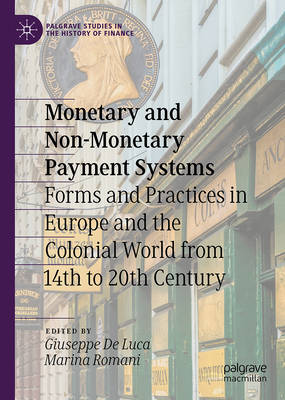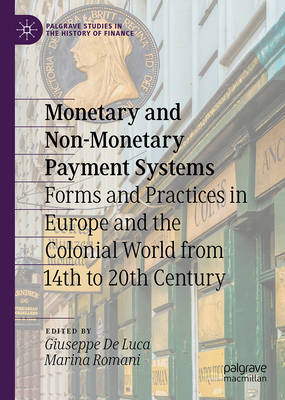
- Afhalen na 1 uur in een winkel met voorraad
- Gratis thuislevering in België vanaf € 30
- Ruim aanbod met 7 miljoen producten
- Afhalen na 1 uur in een winkel met voorraad
- Gratis thuislevering in België vanaf € 30
- Ruim aanbod met 7 miljoen producten
Zoeken
Monetary and Non-Monetary Payment Systems
Forms and Practices in Europe and the Colonial World from 14th to 20th Century
€ 305,45
+ 610 punten
Omschrijving
This book analyses how preindustrial monetary practices functioned, focusing on Europe and some selected colonial areas between the fourteenth and twentieth centuries. It explores the major contexts in which monetary circulation operated and provides a fascinating range of case studies from experts in the field. A primary context for this edited volume is the raft of challenges associated with cash in the preindustrial period. Covering issues such as the slow circulation of coins, the risk of debasement, clipping, the first proto currency, and parallel circulation of several currencies, the book offers insight into the ways in which people dealt with the need to transact and exchange payment. It focuses on cash-equivalent goods and commodity currencies as well as traditional cash methods, looking at the physical development of money as well as exploring the structure of payment methods and financial systems in past societies. Grounded in extensive archival research, chapters use a range of sources such as notary deeds, wills, rent-books, expenditure accounts and public ledgers to analyse the dynamics of circulation and transaction in various settings, from the city to the countryside, regional to international contexts, and different European states. This will be highly valuable reading for scholars interested in financial and monetary history.
Specificaties
Betrokkenen
- Uitgeverij:
Inhoud
- Taal:
- Engels
- Reeks:
Eigenschappen
- Productcode (EAN):
- 9783032118097
- Verschijningsdatum:
- 10/03/2026
- Uitvoering:
- Hardcover
- Formaat:
- Genaaid
- Afmetingen:
- 148 mm x 210 mm

Alleen bij Standaard Boekhandel
+ 610 punten op je klantenkaart van Standaard Boekhandel
Beoordelingen
We publiceren alleen reviews die voldoen aan de voorwaarden voor reviews. Bekijk onze voorwaarden voor reviews.







